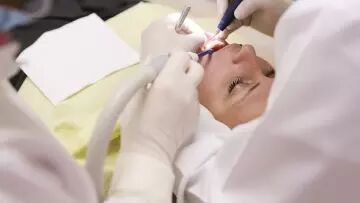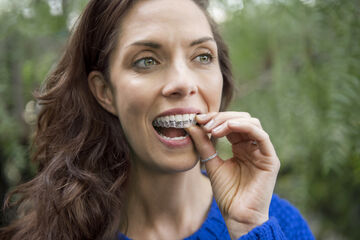Sometimes there will come a point where it is not possible to further treat a tooth and the only option at this point will be to extract it.
But then comes the dilemma of what to do with the gap. There are four main options available to you.
Implants
Implants are now a well-established treatment to fill a gap or gaps caused by a tooth extraction. A titanium screw is placed into your jawbone and is then used to support one or more teeth. Leigh Dental Centre now provides dental implants.
Advantages
An implant will last for as long as you properly care for them, you can expect them to last for many years.
The surrounding teeth will not be affected as they would be with a bridge. To read more about the benefits of dental implants click this link to our previous article.
https://www.leighdentalcentre.co.uk/dental-implants-southend
Disadvantages
You will need to wait 3 – 4 months once the implant has been fitted before the restoration can be fitted on top.
Implants are not suitable for everybody depending on your conditions and oral health
Dentures
Dentures can be made using a chrome (metal) skeleton or an acrylic base and composite teeth. They can be made to replace all the teeth in the upper or lower jaw or can be made to replace just a few teeth.
Advantages
Further teeth can be added to the denture following extractions
Dentures can be completed so they can be fitted as soon as teeth are extracted so you will not have to worry about the gap being visible
Disadvantages
Dentures require patience and practice to allow you to speak and eat with confidence
Dentures will need to be relined and remade over time as the shape of your mouth changes.
Bridges
A bridge is constructed by placing crowns on the teeth on either side of the gap and an artificial tooth in the gap.
Advantages
A bridge can provide a permanent solution to tooth loss at less cost than implants.
They are fixed and stable so you will not have to worry about movement when eating or speaking
Disadvantages
The teeth either side of the gap will need to be drilled to allow crowns to be fitted. This may mean damaging otherwise healthy teeth and increases the risk of them degrading further in the future
Leave the gap there
If you are not self-conscious about the appearance of the gap and you are still able to eat and chew normally, it may be possible to leave the gap with no further treatment.
Advantages
Saves the need for any further dental treatment
Disadvantages
More strain is placed on the teeth either side of the gap, which may wear faster
Teeth may move into the gap and this may change the way your teeth bite together. Food may also get trapped in the gap, which increases the risk of tooth decay and gum disease.
For more information on your dental needs call Leigh Dental Centre on 01702 472 929 or visit our website on https://www.leighdentalcentre.co.uk/.
Contact us to make an appointment
Exclusive Offer
Airflow stain removal from our hygienist


How can Botox be used to treat bruxism?
15.11.2023

Replacement for a Missing Tooth
04.11.2023
Time for you perfect smile?
Book your consultation today
When visiting our practice you know you are visiting the dental professionals trained to the highest standards. You are greeted by our welcoming staff, who share the same aim, to make your visit with us as comfortable and stress free as possible.





